The Catalyst Killing - [25]
I looked at her, taken aback, and wondered secretly if this was some kind of a joke. It was beyond me to understand what significance this detail might have. But Patricia’s face remained focused and almost insistent, without a shadow of a smile, so I answered with forced gravity.
‘Yes. She was, after all, a woman of means and was wearing a rather expensive watch on her left wrist. And it was still working after she had been run over by a train. But I simply have to ask, in return, what on earth you think the practical significance of that is?’
Now, however, Patricia smiled broadly.
‘I thought the practical significance of that would also be obvious. But I am more than happy to explain to you if necessary and you so wish. So far we have, naturally enough, been more interested in why Marie Morgenstierne ran for her life to the train. But what is also interesting is why she was walking so slowly in the first place. Even though she had a watch and knew the time, she was walking at such a leisurely pace towards the train that she would not catch it, and so would have to wait some time for the next one. And she must have known that, as she had taken the train home from meetings many times before. So, one theory that is worth noting is that Marie Morgenstierne wanted to give the impression of heading straight to the train, whereas in reality, she was going to meet someone else or do something else at Smestad yesterday evening.’
I had to admit that this was a theory worth noting. But I felt rather confused. So I excused myself, saying that I was tired after a long day of investigation, and asked with a fleeting smile whether we could meet again and discuss this further tomorrow. By then I would also, hopefully, have some more information to add.
Patricia replied with a bigger smile that she in fact had no other important arrangements tomorrow and that it would suit her very well if I was to drop by sometime after six, for example. Unless the staff had fallen asleep on the job or gone on strike, there was even a hope that I might get a simple meal after my hard day’s work. I thanked her and promised to be there before seven o’clock the following evening. Then I followed the maid out, still pensive, but far more optimistic than when I came in.
I had an extraordinary amount to think about when I went to bed, alone, in my flat in Hegdehaugen at around eleven o’clock on Thursday, 6 August 1970. The faces of the various people I had met in the course of the day flashed through my mind. Miriam Filtvedt Bentsen’s face stayed longest, even though she was the one I least suspected of being a murderer. But then I could not really imagine any of the people I had met so far as being Marie Morgenstierne’s extremely cold-blooded murderer. And if one of them was in fact behind it, I had no idea of who that might be.
And so, just before I fell asleep, I pondered what Patricia had said about the curse of public space, and concluded that the murderer was probably someone else, somewhere else out there in the dark. And I unfortunately had no idea as to how we might find him or her.
DAY THREE: More answers, more questions – and more suspects
I
I skimmed the newspapers at the breakfast table on Friday, 7 August 1970 and saw that the Mardøla protests still dominated the headlines, following an attack on the protestors’ camp by several hundred reportedly angry Romsdalers the night before. The defence minister had refused to send in troops to remove the activists, but a large group of policemen were on their way to prevent any further scuffles. Otherwise, the debate about Norway’s membership of the EEC had intensified after a speech given to Norway’s Rural Youth by the Conservative Party and parliamentary leader, Kåre Willoch, where he had highlighted the EEC negotiations as an important national concern that everyone should support.
Aftenposten and Arbeiderbladet both carried a matter-of-fact report about Marie Morgenstierne’s death at Smestad. Both papers had found out that ‘the well-known Detective Inspector Kolbjørn Kristiansen’ had been given responsibility for the investigation and Aftenposten had, ‘based on previous experience, every hope that the case would be solved and those responsible arrested within a week’.
I put the papers to one side and set off for Kjelsås to start my working day. I still harboured a small hope that the flat where Marie Morgenstierne had lived might contain something to reveal the identity of her murderer.
Getting in proved to be no problem at all. One of the keys from Marie Morgenstierne’s wallet fitted the outside door. The caretaker was at his post and had read about the murder – and about me – in the newspaper, so immediately jumped up when I knocked on the door to his flat on the ground floor. He confirmed that the other key from Marie Morgenstierne’s wallet was to her flat. The only real challenge was to stop him coming in with me. In the end I managed to solve this by promising to come and get him if he could be of any help. He stayed outside the door just in case.
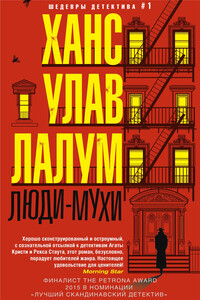
Убит бывший лидер норвежского Сопротивления и бывший член кабинета министров Харальд Олесен. Его тело обнаружено в запертой квартире, следов взлома нет, орудие убийства отсутствует. На звук выстрела к двери Олесена сбежались все соседи, но никого не увидели. Инспектор уголовного розыска Колбьёрн Кристиансен считает, что убийство, скорее всего, совершил кто-то из них. Более того, он полагает, что их показания лживы.
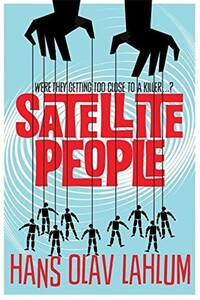
A gripping, evocative, and ingenious mystery which pays homage to Agatha Christie, Satellite People is the second Norwegian mystery in Hans Olav Lahlum's series. Oslo, 1969: When a wealthy man collapses and dies during a dinner party, Norwegian Police Inspector Kolbjorn Kristiansen, known as K2, is left shaken. For the victim, Magdalon Schelderup, a multimillionaire businessman and former resistance fighter, had contacted him only the day before, fearing for his life. It soon becomes clear that every one of Schelderup's 10 dinner guests is a suspect in the case.
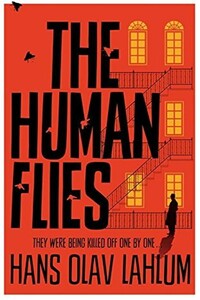
Oslo, 1968: ambitious young detective Inspector Kolbjorn Kristiansen is called to an apartment block, where a man has been found murdered. The victim, Harald Olesen, was a legendary hero of the Resistance during the Nazi occupation, and at first it is difficult to imagine who could have wanted him dead. But as Detective Inspector Kolbjorn Kristiansen (known as K2) begins to investigate, it seems clear that the murderer could only be one of Olesen's fellow tenants in the building. Soon, with the help of Patricia – a brilliant young woman confined to a wheelchair following a terrible accident – K2 will begin to untangle the web of lies surrounding Olesen's neighbors; each of whom, it seems, had their own reasons for wanting Olesen dead.
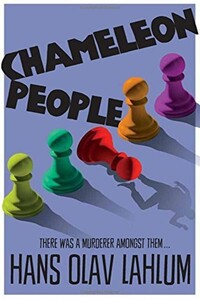
From the international bestselling author, Hans Olav Lahlum, comes Chameleon People, the fourth murder mystery in the K2 and Patricia series.1972. On a cold March morning the weekend peace is broken when a frantic young cyclist rings on Inspector Kolbjorn 'K2' Kristiansen's doorbell, desperate to speak to the detective.Compelled to help, K2 lets the boy inside, only to discover that he is being pursued by K2's colleagues in the Oslo police. A bloody knife is quickly found in the young man's pocket: a knife that matches the stab wounds of a politician murdered just a few streets away.The evidence seems clear-cut, and the arrest couldn't be easier.
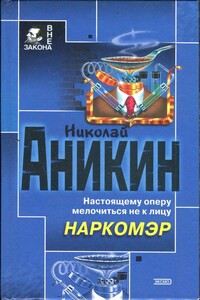
Тупик. Стена. Старый кирпич, обрывки паутины. А присмотреться — вроде следы вокруг. Может, отхожее место здесь, в глухом углу? Так нет, все чисто. Кто же сюда наведывается и зачем? И что охраняет тут охрана? Да вот эту стену и охраняет. Она, как выяснилось, с секретом: время от времени отъезжает в сторону. За ней цех. А в цеху производят под видом лекарства дурь. Полковник Кожемякин все это выведал. Но надо проникнуть внутрь и схватить за руку отравителей, наживающихся на здоровье собственного народа. А это будет потруднее…

«Посмотреть в послезавтра» – остросюжетный роман-триллер Надежды Молчадской, главная изюминка которого – атмосфера таинственности и нарастающая интрига.Девушка по имени Венера впадает в кому при загадочных обстоятельствах. Спецслужбы переправляют ее из закрытого городка Нигдельск в Москву в спецклинику, где известный ученый пытается понять, что явилось причиной ее состояния. Его исследования приводят к неожиданным результатам: он обнаруживает, что их связывает тайна из его прошлого.
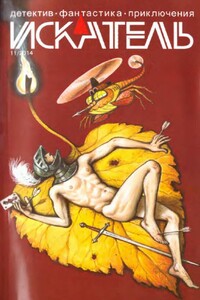
«ИСКАТЕЛЬ» — советский и российский литературный альманах. Издаётся с 1961 года. Публикует фантастические, приключенческие, детективные, военно-патриотические произведения, научно-популярные очерки и статьи. В 1961–1996 годах — литературное приложение к журналу «Вокруг света», с 1996 года — независимое издание.В 1961–1996 годах выходил шесть раз в год, в 1997–2002 годах — ежемесячно; с 2003 года выходит непериодически.Содержание:Анатолий Королев ПОЛИЦЕЙСКИЙ (повесть)Олег Быстров УКРАДИ МОЮ ЖИЗНЬ (окончание) (повесть)Владимир Лебедев ГОСТИ ИЗ НИОТКУДА.
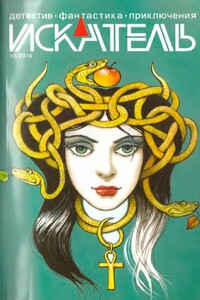
«ИСКАТЕЛЬ» — советский и российский литературный альманах. Издается с 1961 года. Публикует фантастические, приключенческие, детективные, военно-патриотические произведения, научно-популярные очерки и статьи. В 1961–1996 годах — литературное приложение к журналу «Вокруг света», с 1996 года — независимое издание.В 1961–1996 годах выходил шесть раз в год, в 1997–2002 годах — ежемесячно; с 2003 года выходит непериодически.Содержание:Олег Быстров УКРАДИ МОЮ ЖИЗНЬ (повесть);Петр Любестовский КЛЕТКА ДЛЯ НУТРИИ (повесть)
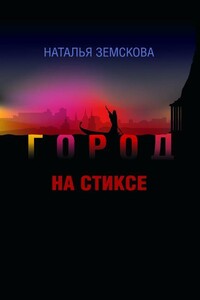
Наталья Земскова — журналист, театральный критик. В 2010 г. в издательстве «Астрель» (Санкт-Петербург) вышел её роман «Детородный возраст», который выдержал несколько переизданий. Остросюжетный роман «Город на Стиксе» — вторая книга писательницы. Молодая героиня, мечтает выйти замуж и уехать из забитого новостройками областного центра. Но вот у неё на глазах оживают тайны и легенды большого губернского города в центре России, судьбы талантливых людей, живущих рядом с нею. Роман «Город на Стиксе» — о выборе художника — провинция или столица? О том, чем рано или поздно приходится расплачиваться современному человеку, не верящему ни в Бога, ни в черта, а только в свой дар — за каждый неверный шаг.
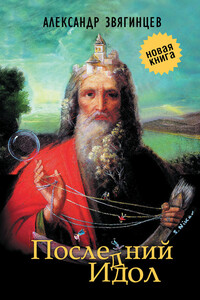
В сборник «Последний идол» вошли произведения Александра Звягинцева разных лет и разных жанров. Они объединены общей темой исторической памяти и личной ответственности человека в схватке со злом, которое порой предстает в самых неожиданных обличиях. Публикуются рассказы из циклов о делах следователей Багринцева и Северина, прокуроров Ольгина и Шип — уже известных читателям по сборнику Звягинцева «Кто-то из вас должен умереть!» (2012). Впервые увидит свет пьеса «Последний идол», а также цикл очерков писателя о событиях вокруг значительных фигур общественной и политической жизни России XIX–XX веков — от Петра Столыпина до Солженицына, от Александра Керенского до Льва Шейнина.